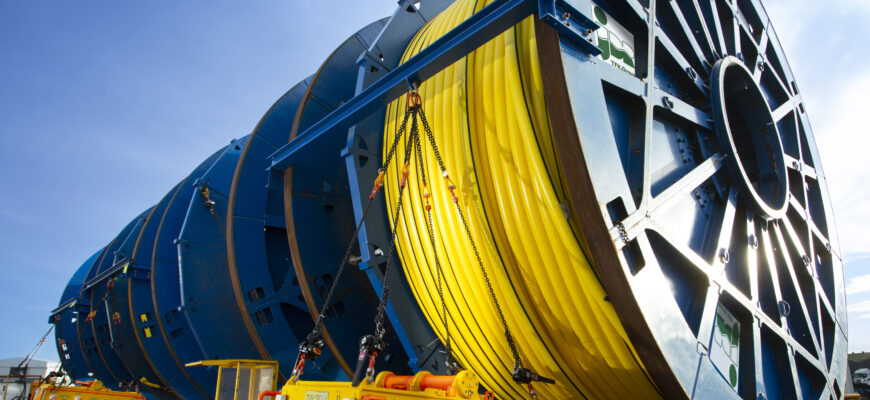BLOG: Steering a resilient subsea supply chain through foggy weather
: A perfect storm is brewing in the subsea supply chain, early engagement is needed to bring fairer weather writes Carl Pilmer, Energy Sales Director at JDR Cables.
To date, the manufacture of UK-made subsea cables and umbilicals has been a runaway success story; backed by rapid development in dynamic cable technologies and underpinned by enthusiasm for the energy transition. The importance of a strong offshore supply chain is undeniable, ensuring new projects achieve fruition in a safe and efficient way, whilst also protecting and evolving current offshore infrastructure.
However, concerns over the outcome of the government’s latest Contracts for Difference round, long lead times to turn new North Sea oil and gas licenses into production, and the far-reaching impacts of the Russian invasion of Ukraine are beginning to see the future look decidedly overcast. The forecast? Possible storms ahead.
We know that many of these factors are outside of the offshore industry’s control. Increasing project costs, heightened East-to-West competition, and M&A deals that have put new energy infrastructure project plans on the backburner, are all percolating together to create a foggy outlook. However, the subsea supply chain is used to turbulence and its resilience has weathered many energy industry storms over the decades.
Early engagement to navigate stormy seas
One thing that has the potential to bring much fairer weather to the industry is early project engagement. The impact of early engagement is two-fold. First, it brightens the future for those operating within the subsea supply chain and allows it to remain responsive to the needs of developers and confidence in the industry’s direction of travel.
But secondly, and perhaps more importantly, we can maximise efficiencies to give those projects – be it oil and gas, offshore wind, hydrogen or CCUS – the best possible chance of going ahead. It is always a bitter pill to swallow when we hear that a final investment decision has been knocked back because a project’s Capex or Opex requirements are too high, knowing if we’d been brought in earlier, we could have proposed more cost-efficient design and engineering options.
When we know project details early and gain timely access to final investment decision information, solutions can be efficiently designed and resources planned, helping to maximise investment, as well as accelerating and streamlining project delivery. For example, we’ve innovated new cable designs to mitigate fluctuating steel and copper costs and supply constraints. As a business, we have also invested in 132kV cable technologies and manufacturing facilities to meet the future demands of higher-powered energy assets.
Making the most of subsea innovation
In fact, most subsea supply chain companies welcome the opportunity to provide design and engineering works so that the details for a proposed project can be as accurate and innovative as possible. With new technologies and incremental improvements being developed in the subsea space all the time, developers can benefit from working collaboratively with the supply chain on their plans.
As an example, at JDR Cables, we’ve developed a thermoplastic hose solution that is suitable for the longest subsea tiebacks when used with industry standard multiplexed control systems with 25-year design lives. The umbilical armour provides and major advantage for shallow water seabed stability and has been tested and qualified at depths of up to 2,000 metres, making them ideal for use in places like the North Sea and the Middle East. The solution is also lighter, more flexible and more durable, making it easier to install. As manufacturers of both steel tube and thermoplastic hose umbilicals, when a tender comes in and a thermoplastic hose solution is feasible, it is always our first choice.
Similarly, if we can understand the need for the replacement, there may be more cost-effective solutions to solve the problem. As an example, we are seeing requirements from operators managing ageing infrastructure where low voltage subsea circuits are experiencing insulation resistance problems in terminations of very old umbilical systems. Usually, the thermoplastic hoses are still performing and so a new electrical umbilical with advanced terminations can be installed alongside the old umbilical thus extending the life of the system at a much lower cost.
Supporting the local supply chain
The last few years have seen significant investment in the UK’s subsea supply chain and positive intent on local content. We could not be where we are today without it. Yet foreign governments such as China are deeply interested in following this success story and are heavily subsidising Chinese businesses to gain market share. As much as the industry wants to stand on its own two feet, at some point this will become unsuitable, and more proactive involvement from government will be welcomed to ensure new UK energy infrastructure is built making the most of the local supply chain.
It is therefore essential for manufacturers to coach and develop stronger, more resilient and sustainable local supply chains. There is a growing appreciation of this need within the sector. The JDR team and I saw this first hand at a recent event we hosted in partnership with NOF and Energi Coast where the future of supply chains was a key discussion point.
We are committed to doing our part and demonstrating to the developers and operators of offshore energy infrastructure that shoring-up local supply chains, ahead of the anticipated growth in offshore energy, is not only good business sense but also the responsible way to source the critical expertise and technology we can see ahead of us on our low-carbon energy horizon.
The weather for the UK subsea supply chain has been unsettled of late, and ultimately a lot of these pressures are outside of the control of any company. However, small but impactful changes in terms of early project engagement and a continued focus on leveraging the best in innovation stand to help steer the industry to better weather.

